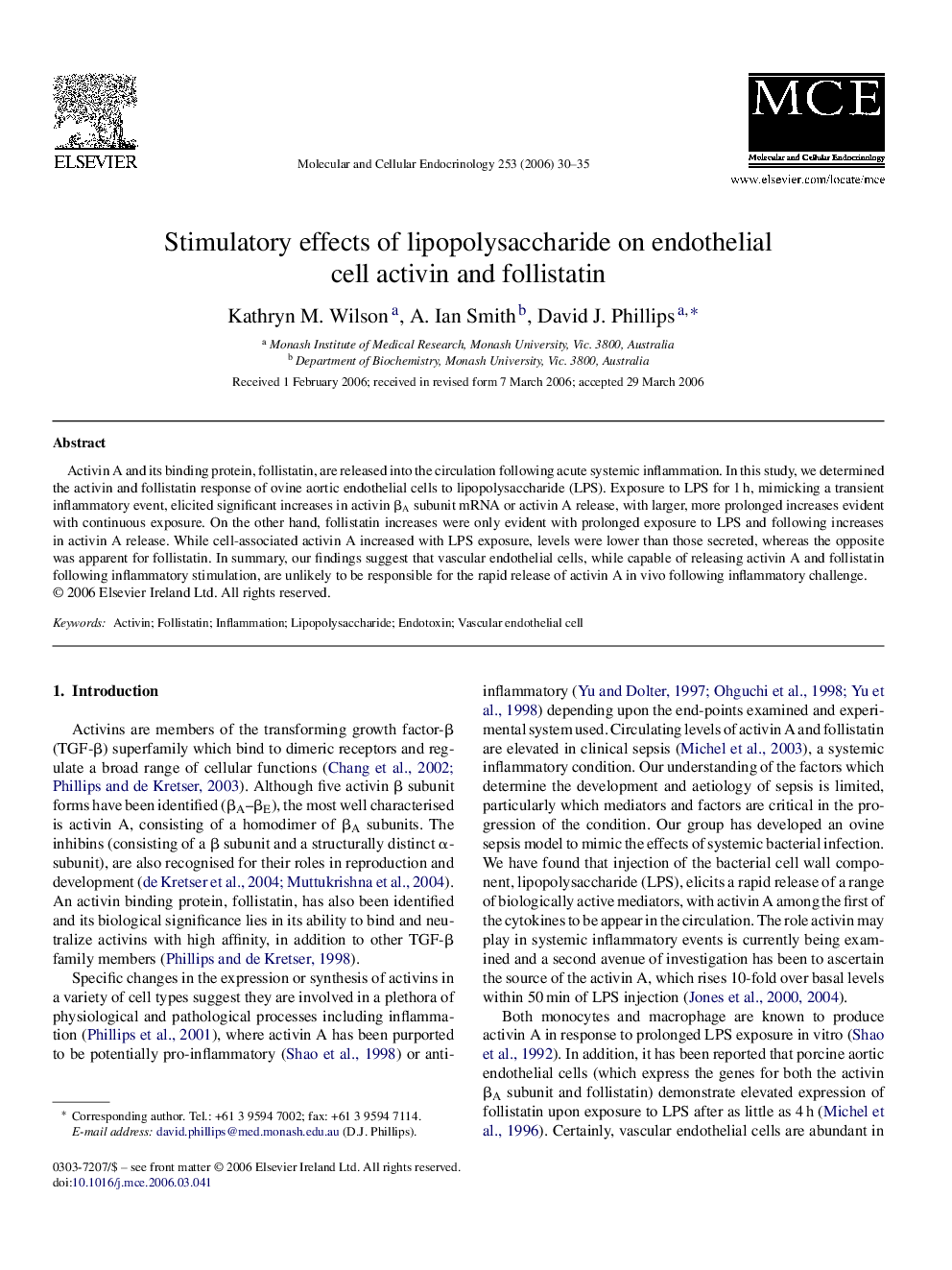| Article ID | Journal | Published Year | Pages | File Type |
|---|---|---|---|---|
| 2198145 | Molecular and Cellular Endocrinology | 2006 | 6 Pages |
Activin A and its binding protein, follistatin, are released into the circulation following acute systemic inflammation. In this study, we determined the activin and follistatin response of ovine aortic endothelial cells to lipopolysaccharide (LPS). Exposure to LPS for 1 h, mimicking a transient inflammatory event, elicited significant increases in activin βA subunit mRNA or activin A release, with larger, more prolonged increases evident with continuous exposure. On the other hand, follistatin increases were only evident with prolonged exposure to LPS and following increases in activin A release. While cell-associated activin A increased with LPS exposure, levels were lower than those secreted, whereas the opposite was apparent for follistatin. In summary, our findings suggest that vascular endothelial cells, while capable of releasing activin A and follistatin following inflammatory stimulation, are unlikely to be responsible for the rapid release of activin A in vivo following inflammatory challenge.
